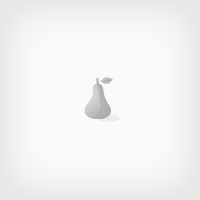What Is Buttermilk?
From donman 15 years agoIngredients
- What is buttermilk? shopping list
- By Cook’s Illustrated magazine shopping list
- buttermilk is a decidedly misleading word. Many assume the product is infused with butter and high in fat, when the truth is quite the opposite. The name refers to the watery end product of butter making-—the "milk" left behind after the solid fat has been removed by churning cream into butter. Like most things modern, however, buttermilk is no longer the simple liquid just described. shopping list
- Today buttermilk is a fermented product made by culturing whole, low-fat, or nonfat (skim) milk. Lactic-acid producing bacteria are added to milk, the milk is heated to 72 degrees, and the harmless bacteria convert lactose (milk sugar) to lactic acid, which gives the final product a slightly thickened, rich texture, and tangy, somewhat salty flavor. The ripening process is complete within 14 hours, at which point the milk is cooled to 45 degrees to halt fermentation. Sometimes butter flakes (also called liquid butter) are added to give the velvety liquid a "churned" look and feel. More often than not, salt and/or citric acid is added to enhance flavor. shopping list
- Several kinds of buttermilk are circulating around the dairy case these days: cultured buttermilk, cultured reduced-fat buttermilk, and cultured skim (nonfat or fat free) buttermilk. The first is made with whole milk, and the others, as their names imply, with reduced fat and skim milks. Fat content correlates directly with the type of milk used and can vary from producer to producer, but it is never higher than 3.25 percent, the percentage of fat in whole milk. Markets north of the Mason-Dixon line generally carry only reduced fat and nonfat buttermilk. whole milk buttermilk is extremely hard to come by unless you are in the South. Tasted side-by-side, we could taste little difference between dressings and baked goods prepared with all three. Use whatever you can find. shopping list
How to make it
- N/A
The Rating
Reviewed by 1 people-
Streptococcus lactis bacteria is the culture that makes buttermilk. It is found in all buttermilk. It will multiply if given the right environment. In my neck of the woods buttermilk is twice as expensive as the other milk products, so I make my own....more
 pointsevenout
in Athens loved it
pointsevenout
in Athens loved it
The Groups
- Not added to any groups yet!


Reviews & Comments 3
-
All Comments
-
Your Comments
" It was excellent "